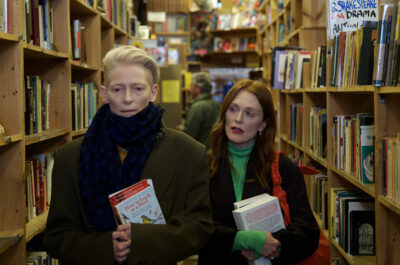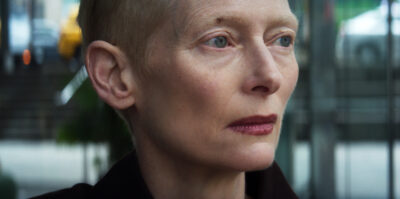It has been another excellent year for animated features. Inside Out 2, The Wild Robot, Look Back, Art College 1994, Chicken for Linda and Memoir of a Snail stand out; Moana 2 just had a record-setting weekend; and we still have The Lord of the Rings: The War of the Rohirrim, The Colors Within and The Day the Earth Blew Up: A Looney Tunes Movie to look forward to.
But, as Yoda said, “there is another.” The adventure-fantasy Flow follows a courageous cat after his home is devastated by a great flood. Teaming up with a capybara, a lemur, a bird, and a dog to navigate a boat in search of dry land, they must rely on trust, courage, and wits to survive the perils of a newly aquatic planet. From the boundless imagination of the award-winning Latvian filmmaker Gints Zilbalodis (Away), Flow is a thrilling animated spectacle as well as a profound meditation on the fragility of the environment and the spirit of friendship and community. Steeped in the soaring possibilities of visual storytelling, it is a feast for the senses and a treasure for the heart and we open it this Friday at the Laemmle Claremont, Glendale, Monica Film Center, and Newhall.
“Critic’s Pick! Grade: A! A movie brimming with sentiment but not sentimentality, this is one of the most moving animated films in recent memory, and, beyond that, groundbreaking too. The anthropomorphic animal characters of 21st century U.S. animated features have nothing on the animal stars of ‘Flow.'” – Christian Blauvelt, Indiewire
“At the risk of sounding hyperbolic, there’s something about the purity of great animated storytelling that can shatter your heart and then make it whole again. (Think Toy Story 3.) Latvian director Gints Zilbalodis’ captivating second feature, Flow, is that kind of marvel, a vividly experiential white-knuckle survival adventure that takes place in a world on the brink of ruin. Told entirely without dialogue, this tale of a cat that evolves from self-preservation to solidarity with a motley crew of other species is something quite special” – David Rooney, The Hollywood Reporter
“Flow is as hard to resist as a pair of plaintive, saucer-shaped eyes peering out from a bundle of fur. Gints Zilbalodis’s second feature is a rousing animated adventure in which a devastating flood obliges an independent cat to seek allies among the animal kingdom. Technical virtuosity is matched by storytelling vigour and dramatic heft in a film with a ready appeal to ailurophiles and animal lovers of all ages.”- Allan Hunter, Screen Daily



